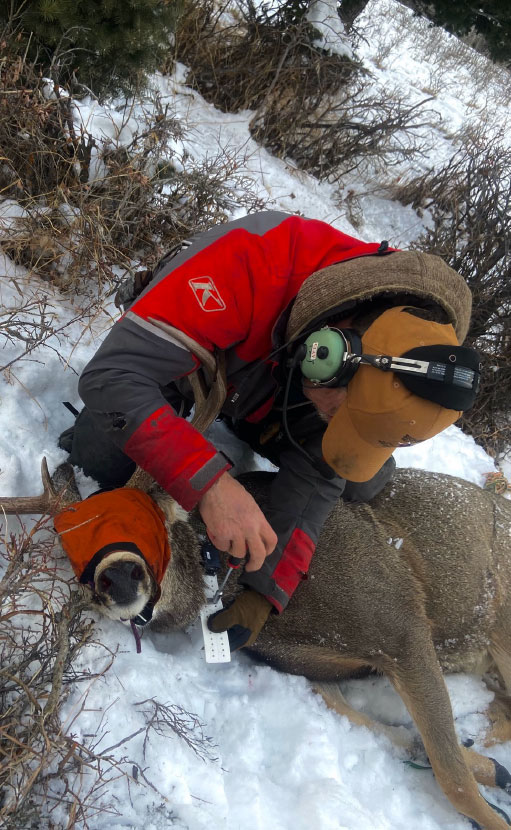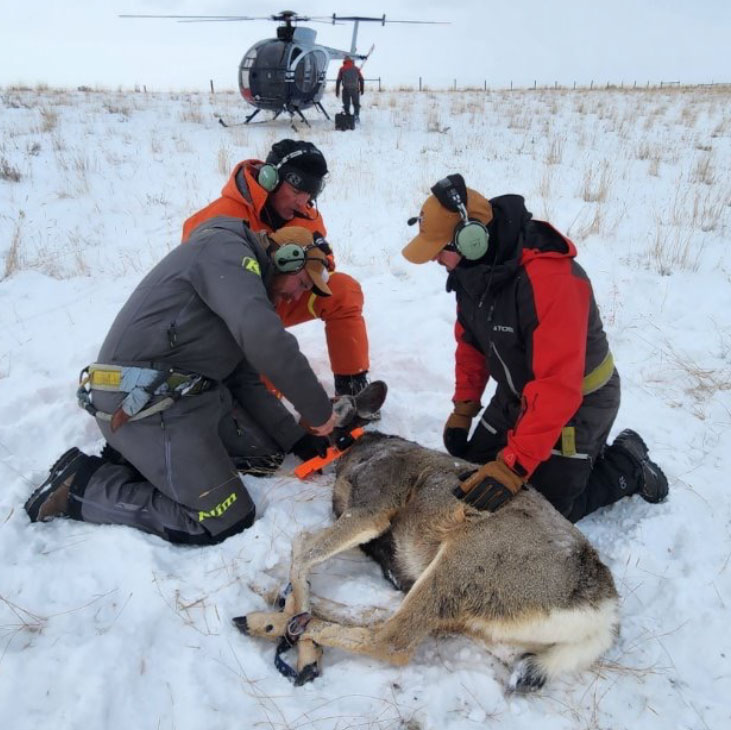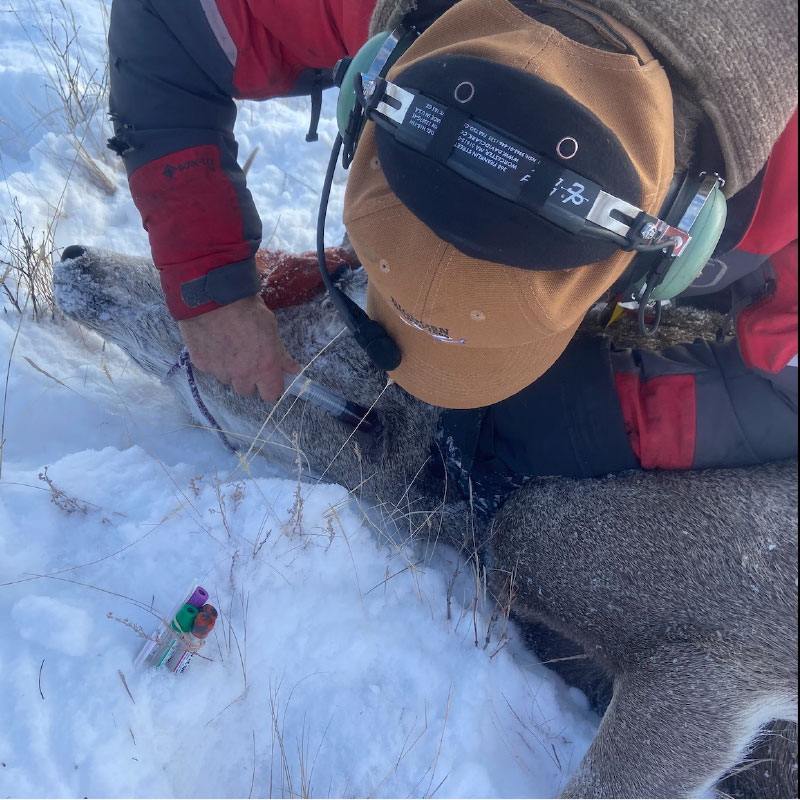
Mule Deer Research
The complete study design includes 4 areas, containing multiple Wildlife Management Units (WMUs) for each study area, within different Alberta Mule Deer Management Zones (MDMZ).
- Southeast MDMZ 100 Cypress Hills and Milk River area (Year 1-5).
- East Central MDMZ 200 Wainwright area with CWD prevalent (Year 3-5).
- Southwest MDMZ 300 (Foothills/ Crowsnest Pass) with low CWD prevalence (Year 1-5).
- Peace River Agriculture forest fringe MDMZ - no CWD (2024) (Year 3-5).
Explore our research objectives and hypotheses
Objective 1:
Evaluate adult female survival and determine causes of mortality.
Hypotheses:
- Hypothesis A: Deer range with multiple predators (i.e., coyotes, cougars, humans, wolves, black bears, grizzly bears, wolverine, lynx, bobcat) will have lower survival than deer range with fewer predators (i.e., coyotes, humans)
- Hypothesis B: Deer range with higher winter severity index will have higher mortality
Objective 2:
Evaluate adult male survival and determine causes of mortality.
Hypotheses:
- Hypothesis A: Deer range with multiple predators (i.e., coyotes, cougars, humans, wolves, black bears, grizzly bears, wolverine, lynx, bobcat) will have lower survival than deer range with fewer predators (i.e., coyotes, humans)
- Hypothesis B: Deer range with higher winter severity index will have higher mortality
Objective 3:
Evaluate efficient population monitoring methods using composition surveys.
Hypotheses:
- Hypothesis A: Within a given year (winter severity comparable between study areas), Annual fawn recruitment (Dec 15 - Jan 31) will be lowest in multiple predator deer range.
- Hypothesis B: Post hunting buck/doe ratios (Dec 15 - Jan 31) will be lowest in deer range with the highest percentage (population) of hunting licence issued.
Objective 4:
Evaluate:
- A. seasonal movement
- B. natural movement corridors
- C. seasonal habitat preference
Hypotheses:
- Hypothesis A: Deer will move to areas with: 1) higher quality forage, 2) lower snow cover, and 3) higher thermal protection, during winter (Dec - April). The more severe the winter severity index (WSI) the higher the correlative response.
- Hypothesis B: Deer that move >10 km annually will use low visibility and low-energetic-cost travel routes (i.e., riparian corridors and low relief with higher frequency than they occur on the landscape).
- Hypothesis C: Deer will be found with higher probability, associated with higher energy forage, relative to its occurrence in the landscape.
Objective 5:
Evaluate body condition using ingesta-free body fat (IFBF) measurements of all captured deer utilizing external ultrasound assessments.
Hypotheses:
- Hypothesis A: Deer that test positive for disease (i.e., CWD) will have less IFBF and be in poorer body condition.
- Hypothesis B: Deer that test positive for disease will have a shorter lifespan.
- Hypothesis C: Deer within deer range that has experienced drought conditions will have lower IFBF.
- Hypothesis D: Deer that have survived a severe winter will have lower IFBF (in the December following a harsh winter).
- Hypothesis E: Deer populations with lower IFBF will have higher predation rates.


